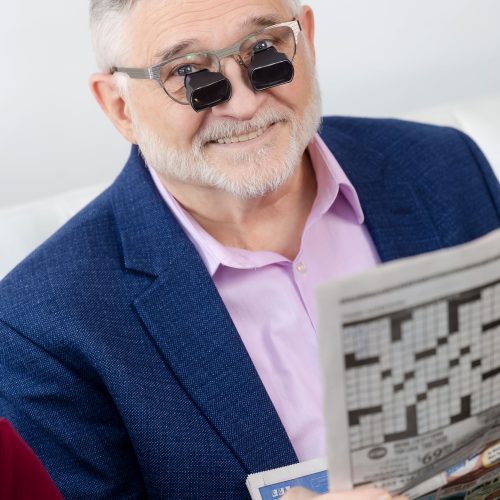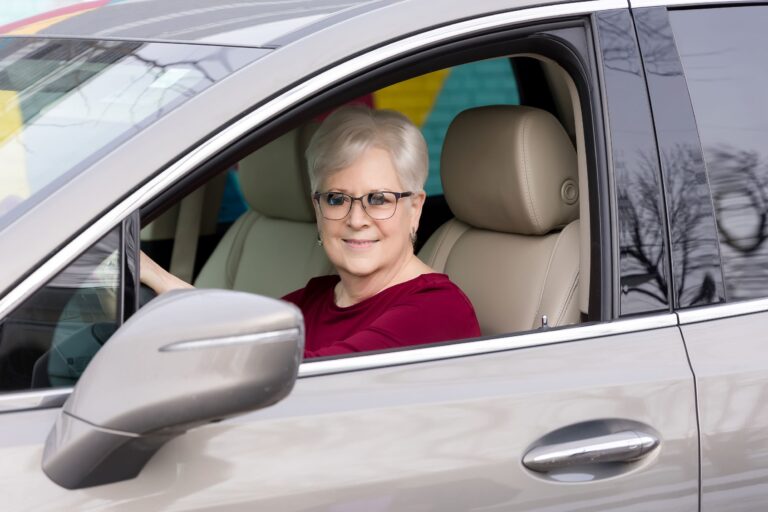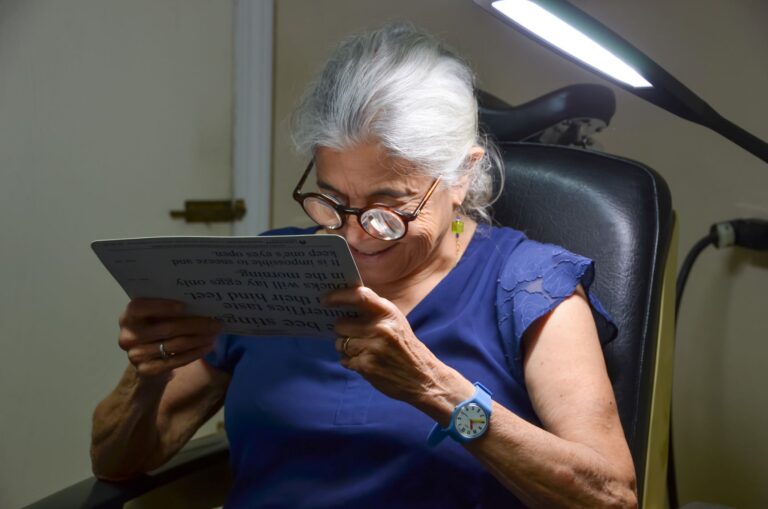
Low Vision Frequently Asked Questions (FAQs)
Ever since William Feinbloom O.D., PH.D. introduced the first low vision glasses in 1936, there have been low vision solutions that, for whatever reason, are not known to the general public (unlike hearing aids.) People with vision-limiting conditions are often frustrated because they have been told that there is nothing more that can be done for their vision when, in fact, there often is!
Common Medical Definitions of Low Vision
- Low vision is vision loss that can’t be corrected fully with glasses, contacts, medication, or surgery
- Low vision is a term that refers to vision 20/70 or worse
- The International Academy of Low Vision Specialists define it as the result of having an eye condition that prevents someone from doing the things that they want to do
Macular Degeneration
Stargardt Disease
Glaucoma
Ocular Albinism
Retinitis Pigmentosa
Diabetic Retinopathy
Stroke-Hemianopsia
This is not an exhaustive list, and there does need to be some usable vision to work with
Reading- Books, Newspapers, Magazines, Sheet Music, Labels on Packaging Including Prescriptions
Writing
Seeing Faces
Driving
Playing Cards
Crafts
Watching TV
Seeing the Food on Their Utensils

A low vision specialist identifies the correct hands-free device, typically a very specialized type of glasses (microscopes, telescopes, E-Scoop™, prismatic reading glasses), to match the eye condition, specific vision, and task that the person wants to do. They may also recommend wearable technology. This could mean that you may need more than one device depending on what you want to see/do.
A low vision specialist can’t fully correct one’s vision. What they do is improve the ability to see and, thereby, do with the person’s usable vision by enhancing/magnifying or expanding the peripheral vision.

- Do you have a vision condition?
- Are there things that you can no longer do as a result?
- Does not being able to do these things frustrate you?
If the answer to all three of these questions is ‘Yes’, then you would benefit from a low vision consultation. If the answer to any of these questions is ‘No’, you do not have low vision (you may have poor vision.)
At a low vision office appointment, Dr. Kornfeld conducts a practical low vision evaluation per The Richard Shuldiner, OD/William Feinbloom, OD Philosophy & Methods of Providing Low Vision Care™.
– The appointment does not involve eye drops to dilate the eyes or a glaucoma test where eye pressure is measured.
– Dr. Kornfeld uses an eye chart with larger numbers, the Feinbloom Low Vision Chart.
-Dr. Kornfeld will request that you bring samples of activities that you regularly perform (stock market reading material, needlework, etc.)
– Dr. Kornfeld will prescribe custom glasses specific to your vision and what you want to do.
Yes. Young people can have the following conditions:
- Stargardt disease (Juvenile Macular Degeneration)
- Nystagmus (where the eyes make repetitive, involuntary movements)
- High Astigmatism (causes blurred distance and near vision)
- Congenital Cataracts (a rare birth defect)
- Achromatopsia (color deficiency)
- Rod-Cone Dystrophy
- Strabismus (Crossed Eyes)
- Amblyopia (Lazy Eye)
Things that young people often want to do are see the board better at school (not have to sit in the front row!), drive, and read better.

People do not need a doctor’s referral to make an appointment.
Dr. Kornfeld sees people with low vision in Rochester, Syracuse, Buffalo, Elmira, Niagara Falls, and Scranton, PA.

The International Academy of Low Vision Specialists has a doctor directory on their website. (www.ialvs.org)
